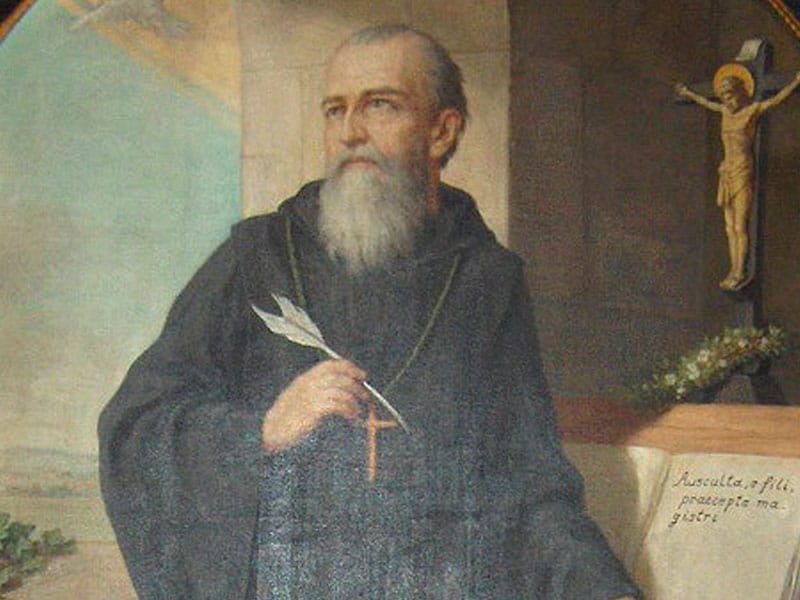St. Benedict (480?-543)

It is unfortunate that no contemporary biography was written of a man who has exercised measureless influence on monasticism in the West. Benedict is well recognized in the later Dialogues of St. Gregory, but these are sketches to illustrate miraculous elements of his career.
Benedict was born of a distinguished family in central Italy, studied at Rome and early in life was drawn to the monastic life. At first he became a hermit, leaving a depressing world—pagan armies on the march, the Church torn by schism, people suffering from war, morality at a low ebb.
He soon realized that he could not live a hidden life in a small town any better than in a large city, so he withdrew to a cave high in the mountains for three years. Some monks chose him as their leader for a while, but found his strictness not to their taste. Still, the shift from hermit to community life had begun for him. He had an idea of gathering various families of monks into one “Grand Monastery” to give them the benefit of unity, fraternity, permanent worship in one house. Finally he began to build what was to become one of the most famous monasteries in the world—Monte Cassino, commanding three narrow valleys running toward the mountain.
The Rule that gradually developed prescribed a life of liturgical prayer, study, manual labor and living together in community under a common father (abbot). Benedictine asceticism is known for its moderation, and Benedictine charity has always shown concern for the people in the surrounding countryside. In the course of the Middle Ages, all monasticism in the West was gradually brought under the Rule of St. Benedict.
Today the Benedictine family is represented by two branches: the Benedictine Federation and the Cistercians.
-
St. John Francis Regis (1597-1640)
-
St. Gregory Grassi and Companions (d. 1900)
-
St. Anthony of Padua (1195-1231)
-
St. Agatha (d. 251?)
-
Blessed John Francis Burte and Companions (d. 1792; d. 1794)
-
Blessed Adolph Kolping (1813-1865)
-
Blessed Emmanuel Ruiz and Companions (1804-1860)
-
St. Bonaventure (1221-1274)
-
Assumption of Mary
-
Sts. Pontian and Hippolytus (d. 235)


